
Curtiss biplane dive bomber
The Curtiss SBC Helldiver was a two-seat scout/dive bomber from Curtiss-Wright and the last military biplane of the USN, introduced from 1937. Although a biplane, it was a modern and very strudy, reliable model seeing service on USS Saratoga, Yorktown and Enterprise in 1938-1940 before being gradually replaced in 1940-41 by the SBD Dauntless. Some models saw service in the French Armée de l’Air and RAF in 1940-42, the latter used as the Cleveland Mark I. The SBC-4 was used as late as 1943 by the USMC and it was only retired in 1945, used as a trainer.
Design development of the first “Helldiver”
Controversy in the USN’s Bureau of Aeronautics (BuAer) in 1930 raged on for what concerned two-seat fighter planes over the monoplane configuration AND retractable undercarriage. In 1931, the Navy issued Design Specification No.113, a requirement for a high-performance fighter with fixed undercarriage and the Wright R-1510 engine, alternative to the Pratt & Whitney’s R-1535. No less than seven companies answered with a proposal. Eventually two were retained: Douglas, presenting with its XFD-1, and Chance Vought, with its XF3U-1. Both were two-seat biplanes, so in doubt the Navy asked Curtiss to provide another prototype of a monoplane, technically more advanced.
On 30 June 1932, BuAer norified Curtiss its latter proposal was accepted. Soon, a contract was signed to design a two-seat monoplane. But Curtiss model had both a parasol wing AND retractable undercarriage, powered by the 625 hp Wright R-1510-92, a 14 cylinder 2-row radial engine driving a two-blade metal propeller. The prototype designed XF12C-1 was soon prepared for its first flight.
Design Development
XF12C-1 (Curtiss M73)

Curtiss XF12C-1 prototype
So the Curtiss parasol model was very modern for the time, with an enclosed glassed-cockpit, all-metal with only the wings, rudder, elevators and flaps fabric covered.
It was initially given the Wright R-1510-92 engine but soon that was proven a bad match, the model was anemic. Thus, the company soon tested and proposed to the Navy the 775 hp (578 kW) Wright R-1670, 14-cylinder doubled row radial, but again the latter proved unsatisfactory. Both were essentially prototypes engines and suffered from reliability issues, so much so that eventually they never went into production.
The more trusted 700 hp (522 kW) Wright R-1820-80 9-cylinder double row was eventually installed and the prototype XF12C-1 first flew in 1933. It was design for aircraft carrier use and thus, had its parasol wing folding back along a central hub. It also had an exposed tail hook to land. After July 1933 more flights and tests took place. By September 1934, the model was to be used as a drive bomber, but the parasol wing proved ill-suited for the task. The air resistance was just too much. Since cantilever monoplanes were still science fiction at the time, Curtiss proposed to remodel the prototype as a biplane. At least the two planes would be smaller in size and support each others in a dive.
XS4C-1 (M73)
The Curtiss M73 was however not complete redesign of the original prototype as a biplane, but just rejected both as a dive bomber and fighter, and instead on 7 December 1933 it was redesignated as the XS4C-1, as cout, re-engined with a 700 hp (522 kW) Wright R-1820-80 radial and two-blade propeller for more endurance. It became a scout aircraft but still capable to carry a 500-pound (227-kilogram) bomb.
XFBC-1 (M73)
As bomb rack tests were concluded in a satisfactory manner in January 1934, the designation scout bomber (SB) was introduced and the M73 was redesignated XSBC-1. From early 1934 the new monoplane multiplied flight tests but also resume dive-bombing tests. On 14 June 1934 the prototype crashed, unsurprisingly due to to wing failure close to New York’s Curtiss plant. Completely destroyed, the root cause of the failure was reported bu Curtiss, proving one again that the biplane solution was preferrable.
XSBC-2 (M77)

Thus, Curtiss redrawn the prototype with staggered wings and mad this paper proposal to the Navy. Curtiss-Wright ensured that if the new model would have no folding wings at least it would have a shorter span and leading edge slots with only the lower wing given full span flaps. Again, it was an all-metal model with control surfaces still covered in fabric. It had the 14-cylinder radial Wright XR-1510-12 rated for 700 hp (522 kW). And it was mater this time to a constant speed Curtiss Electric three-blade propeller.
This new prototype also had an enlarged canopy and for better stability when diving, an enlarged vertical fin and rudder. It also kept the same retractable tail hook and undercarriage of the previous model 73. The Curtiss model 77, called by the Navy XSBC-2, started competitive tests against the Great Lakes Aircraft’s XB2G-1 and the Grumman XSBF-1, but the XSBC-2 won and earned a contract, signed by the Navy in April 1935. The definitive protype XSBC-2 made its first flight on 9 December 1935.
As part of the explanation of how the USN was fielding dive bomber biplanes in 1941, two years had been lost by the insistence of the navy staff to keep a monoplane configuration, with changing requirements and priorities, from fighter to scout, scout-bomber and dive bomber. Still, after these two years, Curtiss has been working on th biplane and knew it was going to win the new competition.
XSBC-3 (M77)

The Wright XR-1510-12 engine however was now the faulty part of the design, untested, it proved unreliable. Tests were plagued by issues unti Curtiss made a re-engined proposal, which was accepted. By March 1936, the 14-cyl. twin-row Pratt & Whitney R-1535-82 (rate for 700 hp (522 kW)) with the same three-blade propeller became the XSBC-3. This time, all tests were successful and spotless. The Navy, eager to have its dive bomber after nearly three years of waiting, immediately planed an order.
Production Models
SBC-3 (Model 77A)

Curtiss SBC-3 from scouting squadron 3 visiting NRAB Oakland in 1938
And thus, the XCBC-3 became the SBC-3 in production, and again, differed from the prototype by its new engine: The 83 ordered in August 1936 were delivered with the much powerful (825 hp/615 kW) Pratt & Whitney R-1535-94, also a 14-cyl, 2-row model. The SBC-3 started to be delivered from 17 July 1937.
Something which as until then almost an afterthought was its armament: Two MGs. One right-side forward-firing 0.30-caliber (7.62 mm) machine gun (doubling its role as a fighter) and for close defence and a tail gun on a flexible mount in the rear cosckpit, under the cover of the turtleback.
Also technology went on in between and the best way to deliver a bomb was not firmly established as a displacement swing placed under the belly, centerline to carry and deliver under the propeller’s arc a 500-lb (227-kg) bomb or 45-U.S.-gallon (170-liter) fuel tank. The 83 SBC-3 were not followed as Curtiss was already proposing a better version, which had to be tested first:
XSBC-4 (Model 77B)

Already on the production line, the 73th SBC-3 was held to be re-engined with the much more powerful Wright R-1820-22 a 9-cylinder single-row but which developed 950-hp (708 kW). It was driving a three-blade Hamilton Standard propeller. The modified model was redesignated XSBC-4 and its forward light MG was replaced by the more impressive 0.5-cal. (12.7-mm) Browning M1920 on the right side. It was possible thanks to the shorter engine. It retained the same rear 0.3-cal. Brownng M1919A4 in the rear cockpit on an improved flexible mount, and the better performances allowed the SBC to now carry the largest aviation ordnance on disposal, a 1,000-lb (454-kg) bomb, with its swing fork redesigned and made larger. A second SBC-3 was also designated XSBC-4 was kept for further tests during the SBC-4 production as Curtiss was confident the Navy would accept the upgrade.
SBC-4 (M77B)

A formation of SBC-4s from NRAB New York (Naval reserve) in formation 1940
The final evolution of the SBC was also the largest production batch: 124 production were ordered on 5 January 1938, deliveries starting in March 1939, until April 1941. In between, the war has started and Curtiss, examined by a French and later a British commission, were in turn ordered, porting the final count when production ceased in early 1941 to 257 machines. With a nearly 1000-hp engine and 1000-Ibs bomb, the rugged biplane (made for carrier use) still was one of the world’s best dive bomber still in 1940.
Indeed, the Vought Vindicator was the alternative model also introduced on US Aicraft Carrier, and albeit of the same generation, the Vought model was produced earlier and has a monoplane cantilever configuration. In total from 1933 to 1938, development of this model took a staggering six years. By that interval, aeronautocal tech went through many iterations and innovations, as tactics changed along the way. Only it’s good overall performances made the Curtiss M77 a fine design, close in general philosophy to the Grumman FF and F2F, F3F fighters.
Final design

The SBC in its early like production version was a modern, all-metal and two-seat scout-bomber biplane. The monoplane prototype had “Y”-type interplane struts, the biplane had “I” Type. Since it came in production relatively late, it became de facto the last combat biplane purchased by the Navy. The two crewmen were the forward seating pilot and rearwards seated radio operator which doubled as gunner, both protected in tandem cockpits, with sliding canopies. The fuselage was made of steel frames, with stressed aluminium skin sheating.
There was a turtledeck behind the rear cockpit which could be folded down, allowing the gunner to raise and fire his machine gun. In noormal conditions it was raised up to reduce drag and improve stability. The wings, rudder, elevators and flaps were all fabric covered as customary at the time. The main landing gear could be fully retracted, into wheel wells designed by Grumman, both located in the fuselage forward of the lower wing. The tail wheel could also be retracted into the fuselage. So apart the biplane configuration, this was really a modern aicraft by all measures.


Forward and aft sections of the cockpit (NARA/ONI)
The pros and cons of the biplane formula were well known: Lof of lifting capacity, superior agility, lower landing speed. Its disadvantages were a lower structural integrity for high speeds, and limits in dive speeds, as well as reduced visibility (at least in the low-mounted variant, as the prototype has a parasol wing, for excellent visibility). Overall, the biplane configuration and speed limitations did not hampered much its use as diver bomber.
Engines:
Pratt & Whitney R-1535-94 (SBC-3)
Also called the “Twin Wasp Junior”, this engine as derived from a serie starting with the model 11 developing 750 ch (559 kW) in 1932. The model 94 825 ch (615 kW), and the configuration was of 14 cylinder in a double row radial configuration of two seven(cylinder rows, interleaved for better air cooling of the rear serie. Its capacity was 25,2 L with a 131,8 mm cylinder course and weighting 493 kg.
Wright R-1820-22 (SBC-4)
The famous “Cyclone” serie became a world famous engine in the early 1930s, also licenced by Hispano-Suiza in France, Lycoming Canada, and Shvetsov in USSR. This model was famously used by the Douglas DC-1, DC-2, DC-3, DC-5, Boeing B-17 Flying Fortress, Curtiss P-36 Hawk, GM FM-2 Wildcat, Douglas SBD Dauntless. The early R-1820-1 developed 575 hp (429 kW) and the final R-1820-G205A developed 1,200 hp (890 kW). The model 22 was an early model which developed 950 hp (710 kW).
Armament:
As describes above, the SBC-3 was given two light M1919 Browning machine guns: One on the right side, synchronized with the propeller as it fired forward, and the second on a flexible mount aft, manned by the rear gunner/radio/navigator. The bomb load was a single 500-lb (227-kg) bomb alternative to a 45-U.S. gallon (170-liter) fuel tank.
The SBC-4 was more powerful and allowed the replacement of the Browning 0.3 cal. LMG by a Browning M1920 HMG or 0.50-caliber (12.7-mm). It was forward of the pilot, firing through a recess but it’s unclear if a jamming could be resolved by the pilot underway. The range and ammunition impact was several fold greater and increased the chances of the Helldiver to really cause havoc on lightly-built Japanese aircraft. No change for the rear gunner, but the bomb load, thanks to the extra output, could be double, with a 1000 Ibs (454 kg.) bomb.
⚒ Specifications SBC-3 1938 |
|
| Dimensions: | L 28 ft x Wsp 34 ft x H 10 ft 5 in (8.574 x 10.36 x 3.18 m) |
| Wing area | 317 sq ft (29.5 m2) |
| Airfield | NACA 2212 |
| Weight, empty | 4,552 lb (2,065 kg) |
| Weight, gross | 7,080 lb (3,211 kg) |
| Propulsion | Wright R-1820-34 radial engine, 850 hp (630 kW) |
| Propeller | 3-bladed constant-speed propeller |
| Speed, max. | 234 mph (377 km/h, 203 kn) at 15,200 ft (4,600 m) |
| Speed, cruise | 175 mph (282 km/h, 152 kn) |
| Ceiling | 24,000 ft (7,300 m) |
| Climb Rate | 1,630 ft/min (8.3 m/s) |
| Range | 405 mi (652 km, 352 nmi) |
| Wing load | 28.5 lb/sq ft (139 kg/m2) |
| Power/mass | 0.282 kW/kg (0.172 hp/lb) |
| Armament: MGs | 2 × 0.30 in (8 mm) Browning M1919 (? rounds) |
| Armament: Bombs | 1 × 500 lb (227 kg) bomb/fuel tank |
| Payload: | 1 × 58 US gal drop tank |
| Crew: | 2: Pilot, gunner/navigator |
The Curtiss SBC in Action & Operators
United States Navy Use

Nice color photo of a freshly arrived SBC-3 aboard an unknown carrier, yet to identify. (see the sources below)
The first SBC-3s arrived on 17 July 1937, scheduled for Scouting Squadron Five (VS-5) aboard USS Yorktown (CV-5) to start carrier qualifications. However, was still not commissioned until 30 September 1937 and had to perform her sea trials first. Meanwhile the planes trained on land. On 10 December 1937 at last, five months beyond schedule, VS-5 landed on Yorktown and was active on the carrier until replacement by Douglas SBD-3s Dauntles in 1940.

Various models a NAS Miami in 1942, with several SBCs in the background
By June 1938, 3 out of 5 scouting squadrons on carriers ahd the new SBC-3s the remainder having to make due with the Vought SBU-1 Corsair (1935), the other “last USN biplane”. This when the war broke out in September 1939, the USN operated the Helldiver on USS Enterprise (CV-6), with VF-6 (One) and VS-6 (20 Helldivers), USS Saratoga (CV-3) had Bombing Squadron Three (VB-3) with a single SBC-3 while VF-3 had an SBC-3 and VS-3 had 21 Helldivers. There was also the veteran, USS Yorktown (CV-5) with VS-5 equipped with ten SBC-3s.
Based on the 5 January 1938 contract for 58 SBC-4s other deliveries were due tha year, whereas 31 more were ordered on 27 July 1938 and 35 aircraft on 13 August 1938 for 124 total.
The SBC-4 made its debut with VS-2 on USS Lexington (CV-2), the only one not equipped with the Helldiver. The SBC-4 replaced the Vought SBU-1 there and by 26 June 1939, VS-2 reached it max 21 aircraft provision. They were replaced after two years by the Douglas SBD-2/3 Dauntless.

SBC-3 Helldiver from VS-3 (USS Saratoga) in flight, 1939
However as raising contracts enabling by the start of the war in Europe saw the remaining SBC-4s reassigned to Naval Reserve Air Bases, enabling reserve Navy and Marine airmen to maintain their proficiency on more modrn models.
By June 1940, there were 11 NRABs equipped with the SBC-4s:
NRAB Anacostia (3 SBC-4s to VS-6R and VMS-3R)
NRAB Boston (3 SBC-4s to VS-1R, VS-2R and VMS-1R)
NRAB Detroit, Michigan (3 SBC-4s to VS-8R and VMS-5R)
NRAB Glenview (4 SBC-4s to VS-9R)
NRAB Kansas City (4 SBC-4s to VS-12R and VMS-10R)
NRAB Long Beach (SBC-4s to VS-13R, VS-14R and VMS-7R)
NRAB Minneapolis (3 SBC-4s to VS-10R and VMS-6R)
NRAB New York (4 SBC-4s to VS-3R, VS-4R and VMS-2R)
NRAB Oakland (4 SBC-4s to VS-15R and VMS-8R)
NRAB Seattle (4 SBC-4s to VS-16R and VMS-9R)
NRAB St. Louis (3 SBC-4s assigned to VS-11R)
The SBC-3s were in turn replaced by SBD Dauntless and by 7 December 1941, in total 69 SBC-3s and 118 SBC-4s served with the USN/USMC between Naval Air Stations, Naval Reserve ABs, and the Naval Aircraft Factory in Philadelphia. NAS Miami in Florida had the more of those, usable for intermediate and dive bombing training until 1943.
When the attack on Pearl Harbor commenced in December 1941, SBC were deployed at NAF Philadelphia (XSBC-1 proto and 1 SBC-3), NAS Corpus Christi (34 SBC-4s), NAS Miami (55 SBC-3s) NAS Norfolk (4 SBC-3s, 10 SBC-4s), NAS San Diego (9 SBC-3s, 11 SBC-4s), and the Naval Mission in Lima, Peru, trying to sell it locally, with a single SBC-4 in demonstrations.
Surprisingly enough USS Hornet (CV-8) just completed was to be equipped with almost 40 Helldivers:
-Bombing Squadron Eight (VB-8) with 19 SBC-4s,
-Scouting Squadron Eight (VS-8) with 20 SBC-4s
Se actually made her sea trials in the Atlantic with her two SBC-4s squadron until sailing to San Diego via Panama in March 1942. In California, her two squadrons were replaced by SBD-3 Dauntless. She was the last US Carrier to operate the SBC.
The second French order in mid-1940 meant 40 SBC-4s, built between February and May 1941 were to be shipped overseas with a 126-U.S. gallon (477-liter) self-sealing fuel tank and were kept after the fall of France, the last being delivered in May 1941.
By 1944, the SBC-3 was stricken from the inventory, but still, the 12 SBC-4s from NAS Jacksonville had to wait until 31 October 1944 for their retirement. The very last of their kind. No USN SBC saw action. There were none at Pearl Habror.
USMC use

Model of the VMO-151 in 1941
The US Marines Corps soon obtained ex-US models from the carriers, when replaced by the Dauntless.
The Marines had their first SBC-3 in 1938 for evaluation, assigned to Marine Fighter Squadron Two (VMF-2, later VMF-211 by July 1941) based in NAS San Diego, and sent to the Battle Fleet Pool in June 1939. In January 1940 there were four SBC-4s at Marine Corps Air Station (MCAS) Quantico. One more was sent to VMF-1 and the XSBC-4 prototype was sent for testings to Marine Utility Squadron One (VMJ-1, later VMJ-152). The other two were in NAS San Diego, VMF-2 and VMJ-2 (VMJ-252).
At the time of the Pearl Harbor attack, the USMC had 23 SBC-4s in all, 12 in Marine observation squadrons at MCAS Quantico (the sole 1 XSBC-4 and 5 SBC-4s), NAS San Diego (5 SBC-4s) and MCAS Quantico (12 SBC-4s). VMO-151 was soon transferred to Tafuna (now Pago Pago) and Tutuila in Samoa, by 9 May 1942. This unit became Marine Scout Bombing Squadron (VMSB) 151 from 15 September 1942. VMO-155 was based in American Samoa on 1 October 1942 and was reinfoced by ten more SBC-4s and a single Grumman J2F-5 Goose. Personal and planes were sent to Guadalcanal afterwards.
By December 1942, VMSB-151 saw its complement replaced by the SBD Dauntless. By June 1943, it was reequipped with SBD-4s and moved to Uvea Island, Wallis.
There was a single SBC-4 at American Samoa (VMSB-151) on 1 June 1943. The Japanese never went there and its fate is uncertain.
French Aeronavale

In September 1939 both Britain and France were in dire need for aircraft, knowing the size of the Luftwaffe. By early 1940, the French government went to Curtiss-Wright and ordered 90 SBC-4s. To speed thnings up, on 6 June 1940 Franklin D. Roosevelt 50 from U.S. Navy stocks at the Naval Reserve to the Curtiss-Wright factory in Buffalo (New York) for a refurbishment to French standards. Markings, instruments, equipment were converted to metric and French, and French 7.7-millimeter (0.303-caliber) Darne machine guns replaced the original Brownings. it was completed by French camouflage and roundels as well as aeronavale markings. They were to delivered to RCAF Station Dartmouth in Nova Scotia (Canada) in order to be loaded onto the French aircraft carrier Béarn.
However in between, neutrality acts from U.S. Congress imposed for arms trade with belligerents a “cash-and-carry” system imposing transport by them using their own means. In short, in order to have them delovered, the planes flew to the frontier and had to be towed across the border. The 50 aircraft freshly converted made a trip from Buffalo, to Houlton Airport in Maine (via Burlington, Vermont and Augusta). The Houlton Airport was just at the Canada–US border. Local farmers were requisitioned with their tractors to tow the planes into New Brunswick. The Canadians closed next the highway in order to each towed SBC to fly off gfrom there to RCAF Station Dartmouth and be re-routed next.
The 50 made their ways over time to Dartmouth but one crashed due to bad weather, the remaining 49 flew next to Nova Scotia, waiting for the Béarn and light cruiser Jeanne d’Arc. The loading commenced, but since Béarn’s hangar was limited, only 44 could be carried aboard. She indeed also already had 25 Stinson Model HW-75s, 17 Curtiss H75-A1s (P-36) and even 6 Brewster F2A-2 of the Belgian Air Force already stacked on her deck. She even had 14 crated Stinson and Curtiss H75s.
The carrier sailed from Halifax on 16 June 1940 for Brest, but underway two days later they learned Brest was in German hands. Both ships were ordered instead to Fort-de-France in Martinique (French West Indies), arriving on 27 June. There, they knew French had surrendered to the Germans since five days. Then a purgatory commenced. The SBC-4s were unloaded, rolled to a field at Pointe des Sables, stored out in the open in tropical conditions. They degraded quite quickly until not being airworthy anymore and being scrapped later when the island fell to Free France. These 49 planes as well as the Stinsons, Curtiss H75 and Buffaloes were all lost in these conditions, never firing a shot. The island was under close watch by the US Navy, preventing any move back to France, which later amounted to a full-on blockade.
Royal Air Force

Five of the French aircraft left at Halifax returned to RCAF Station Dartmouth. By August 1940, the Royal Air Force acquired these, renamed “Cleveland Mk. I”. They went aboard HMS Furious which delivered them. Refurbished again at RAF Burtonwood in Lancashire they were sent to RAF Little Rissington in Gloucestershire and used by No. 24 (Communications) Squadron at RAF Hendon. They were in fact never used but as ground trainers after perhaps a few flights.
Legacy
As seen above, Curtiss tried to sell them to Peru also, but no deal was made. Unfortunately, noe survived to this day apparently. The discarded models in the US were scrapped. As for those *still rotting* in Martinique there is practically nothing left that was not taken long ago which could be a base for a restoration. Financing a reconstruciton would be tough also, as the model had no really active service but the few of the USMC in Samoa and is certainly “forgotten” today, especialy compared to the second one.
Gallery
Illustrations

XF12C-1 Prototype BuAer 9225, NAS Anacostia, ca1933

SBC-3, VC-5, USS Enterprise, 1938

SBC-4, 1st Marine Airwing Command, Quantico 1940.

SBC-4, Air Group Commander, USS Enterprise (CV-6) 1940

SBC-4 of the USMC, VBM-155 Samoa island, 1943, last operational model in operations

French SBC-4, Béarn, Martinique fall 1940
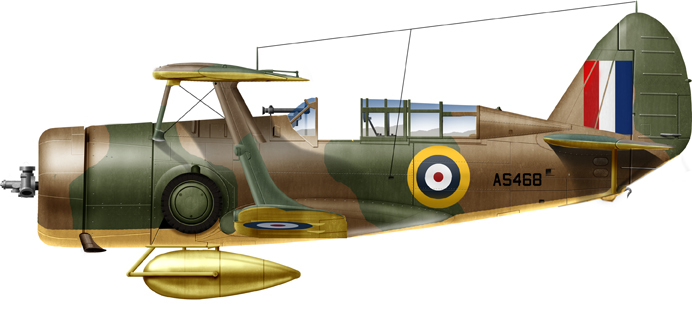
British RAF Cleveland I, 1942
Photos
Read More
Books
Angelucci, Enzo. The American Fighter. New York: Orion Books 1987.
Bowers, Peter M. Curtiss Aircraft, 1907–1947. London: Putnam & Company, 1979.
Doll, Thomas E. SBC Helldiver in Action, Aircraft Number 151. Carrollton, Texas: Squadron/Signal Publications, Inc., 1995.
Francillon, René J. McDonnell Douglas Aircraft since 1920, Volume I. Annapolis, Maryland: Naval Institute Press, 1988.
Gunston, Bill. World Encyclopaedia of Aero Engines. Newbury Park, California: Haynes North America, 1998.
Halley, James J. The Squadrons of the Royal Air Force & Commonwealth 1918–1988. Tonbridge, Kent, England: Air Britain (Historians) Ltd., 1900.
Jane, Fred T. Jane’s All The World’s Aircraft, 1945/6. New York: Arco Publishing Company, 1946.
Johnson, E.R. United States Naval Aviation 1919–1941. Jefferson, North Carolina: McFarland & Company, Inc, 2011.
Larkins, William T. U.S. Navy Aircraft 1921–1941; U.S. Marine Corps Aircraft 1914–1959. New York: Orion Books, 1959 and 1961.
Morareau, Lucien (September 1998). “Les oubliés des Antilles”. Avions: Toute l’aéronautique et son histoire (in French) (66)
Moran, Gerrard P. The CORSAIR and other AEROPLANES VOUGHT 1917–1977. Terre Haute, Indiana: Aviation Heritage Books, 1991.
Naval Historical Center, United States Naval Aviation 1910–1995. Washington, D.C.: U.S. Government Printing Office, 1997.
Sherrod, Robert, History of Marine Corps Aviation in World War II. San Rafael, California: Presidio Press, 1952.
Swanborough, Gordon and Peter M. Bowers. United States Navy Aircraft since 1911. London: Putnam, 1976.
Taylor, John W.R. Jane’s American Fighting Aircraft of the 20th Century. New York: Mallard Press, 1991.
Thetford, Owen. Aircraft of the Royal Air Force Since 1918. London: Putnam & Company, 1979.
Wagner, Ray. American Combat Planes of the 20th Century. Reno, Nevada: Jack Bacon & Company, 2004.
Links
On pacificeagles.net/
On avionslegendaires.net/
On militaryfactory.com/
on airwar.ru/
on jmodels.net/
On silverhawkauthor.com/
On aircraftresourcecenter.com
on aviastar.org/
Extra pics:
Prototypes photos
On airandspace.si.edu, colored
curtiss-sbc-4-helldiver-red-crossed/
On aerocorner.com/
more color on inchhighguy.wordpress.com
On commons.wikimedia.org/
Model Kits

The Matchbox kit, that i made many, many years ago (long gone) at the time, produced in colored grapes, grey, yellow and blue.
Surprisingly despite its complete absence of operational service, the French SBC-4 were covered by Heller to 1/72 Here
General query on scalemates
daviddoylebooks.com/ SBCs USMC VM151
https://finescale.com/product-info/kit-reviews/1998/01/classic-airframes-1-48-scale-curtiss-sbc-4-helldiver


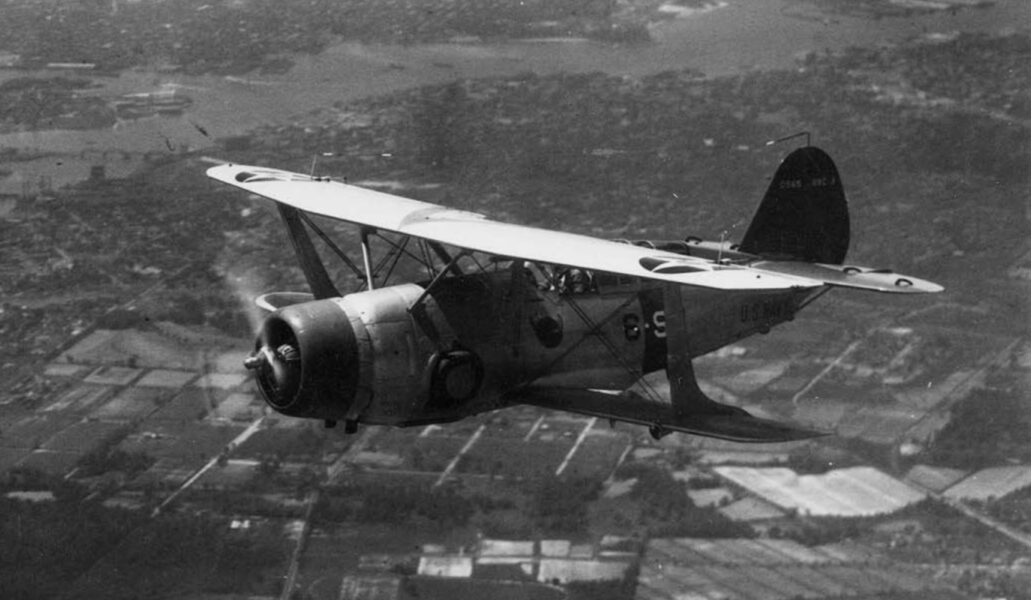
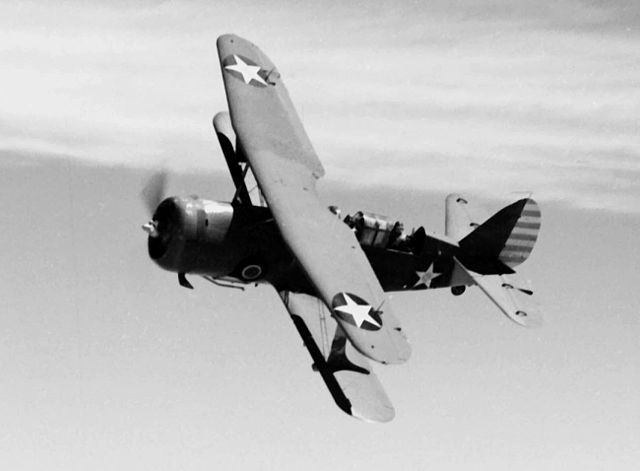
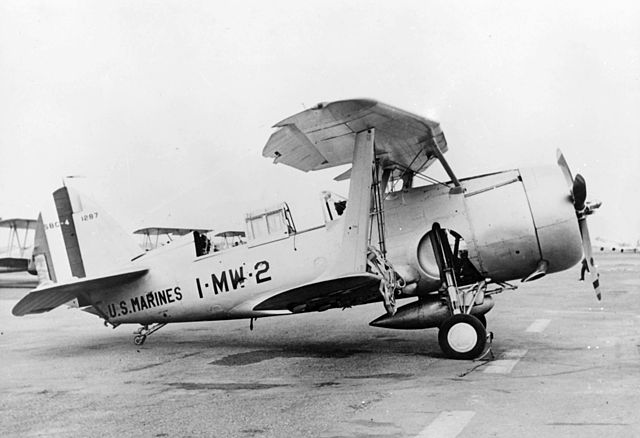


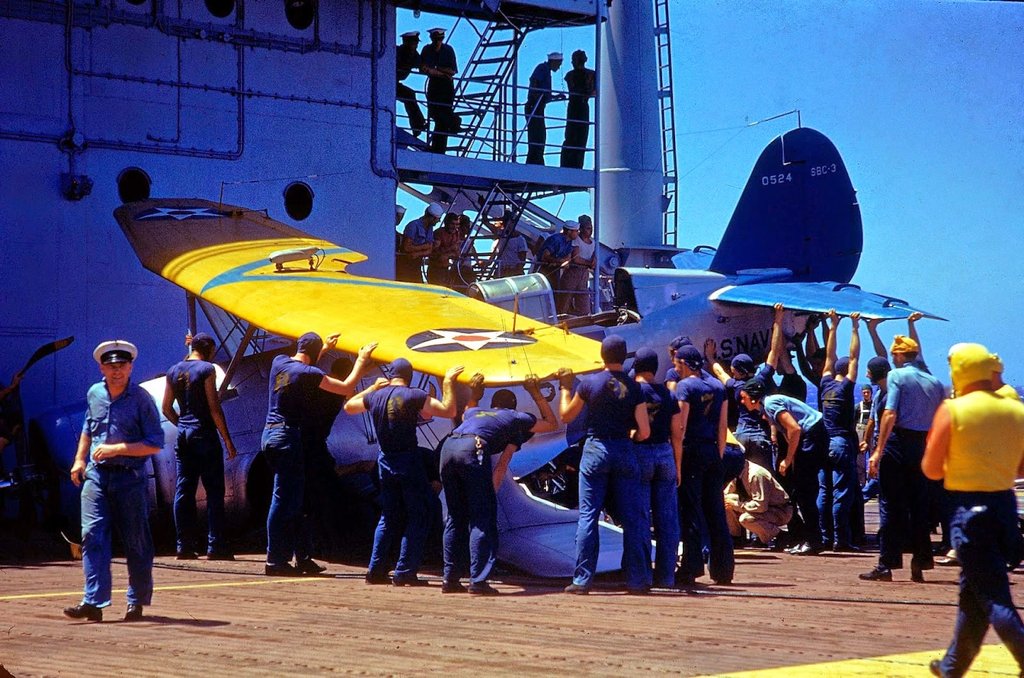
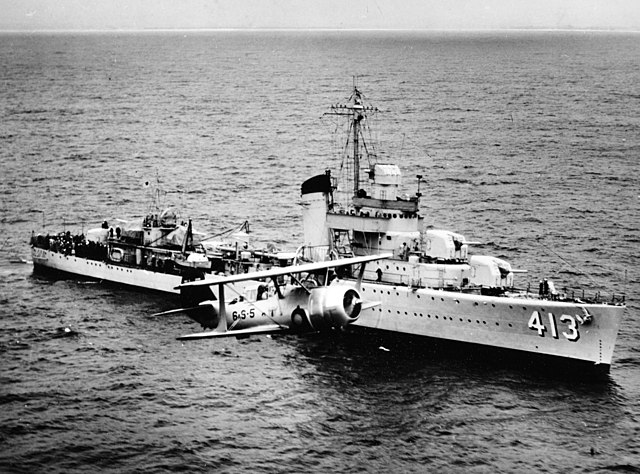





 Latest Facebook Entry -
Latest Facebook Entry -  X(Tweeter) Naval Encyclopedia's deck archive
X(Tweeter) Naval Encyclopedia's deck archive Instagram (@navalencyc)
Instagram (@navalencyc)





 French Navy
French Navy Royal Navy
Royal Navy Russian Navy
Russian Navy Armada Espanola
Armada Espanola Austrian Navy
Austrian Navy K.u.K. Kriegsmarine
K.u.K. Kriegsmarine Dansk Marine
Dansk Marine Nautiko Hellenon
Nautiko Hellenon Koninklije Marine 1870
Koninklije Marine 1870 Marinha do Brasil
Marinha do Brasil Osmanlı Donanması
Osmanlı Donanması Marina Do Peru
Marina Do Peru Marinha do Portugal
Marinha do Portugal Regia Marina 1870
Regia Marina 1870 Nihhon Kaigun 1870
Nihhon Kaigun 1870 Preußische Marine 1870
Preußische Marine 1870 Russkiy Flot 1870
Russkiy Flot 1870 Svenska marinen
Svenska marinen Søværnet
Søværnet Union Navy
Union Navy Confederate Navy
Confederate Navy Armada de Argentina
Armada de Argentina Imperial Chinese Navy
Imperial Chinese Navy Marinha do Portugal
Marinha do Portugal Mexico
Mexico Kaiserliche Marine
Kaiserliche Marine 1898 US Navy
1898 US Navy Sovietskiy Flot
Sovietskiy Flot Royal Canadian Navy
Royal Canadian Navy Royal Australian Navy
Royal Australian Navy RNZN Fleet
RNZN Fleet Chinese Navy 1937
Chinese Navy 1937 Kriegsmarine
Kriegsmarine Chilean Navy
Chilean Navy Danish Navy
Danish Navy Finnish Navy
Finnish Navy Hellenic Navy
Hellenic Navy Polish Navy
Polish Navy Romanian Navy
Romanian Navy Turkish Navy
Turkish Navy Royal Yugoslav Navy
Royal Yugoslav Navy Royal Thai Navy
Royal Thai Navy Minor Navies
Minor Navies Albania
Albania Austria
Austria Belgium
Belgium Columbia
Columbia Costa Rica
Costa Rica Cuba
Cuba Czechoslovakia
Czechoslovakia Dominican Republic
Dominican Republic Haiti
Haiti Hungary
Hungary Honduras
Honduras Estonia
Estonia Iceland
Iceland Eire
Eire Equador
Equador Iran
Iran Iraq
Iraq Latvia
Latvia Liberia
Liberia Lithuania
Lithuania Mandchukuo
Mandchukuo Morocco
Morocco Nicaragua
Nicaragua Persia
Persia San Salvador
San Salvador Sarawak
Sarawak Uruguay
Uruguay Venezuela
Venezuela Zanzibar
Zanzibar Warsaw Pact Navies
Warsaw Pact Navies Bulgaria
Bulgaria Hungary
Hungary

 Bundesmarine
Bundesmarine Dutch Navy
Dutch Navy Hellenic Navy
Hellenic Navy Marina Militare
Marina Militare Yugoslav Navy
Yugoslav Navy Chinese Navy
Chinese Navy Indian Navy
Indian Navy Indonesian Navy
Indonesian Navy JMSDF
JMSDF North Korean Navy
North Korean Navy Pakistani Navy
Pakistani Navy Philippines Navy
Philippines Navy ROKN
ROKN Rep. of Singapore Navy
Rep. of Singapore Navy Taiwanese Navy
Taiwanese Navy IDF Navy
IDF Navy Saudi Navy
Saudi Navy Royal New Zealand Navy
Royal New Zealand Navy Egyptian Navy
Egyptian Navy South African Navy
South African Navy






























 Ukrainian Navy
Ukrainian Navy dbodesign
dbodesign